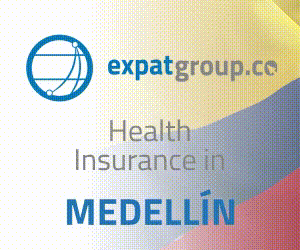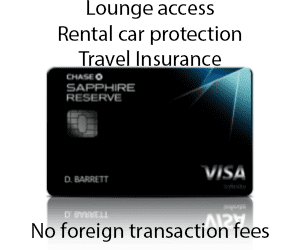Fitch Upgrades ColTel (Movistar) to ‘BBB-‘; Outlook Stable
Fitch Ratings has upgraded Colombia Telecomunicaciones S.A. E.S.P.’s (ColTel) Foreign Currency (FC) and Local Currency (LC) Issuer Default Ratings (IDR) to ‘BBB-‘ from ‘BB+’, the 2022 notes to ‘BBB-‘ from ‘BB+’, and the hybrid note to ‘BB’ from ‘BB-‘. The Rating Outlook is Stable. The upgrades reflect the company’s continued deleveraging following the 2017 recapitalization, materially strengthening its financial profile, which is now in line with investment-grade peers throughout the region. Fitch expects that the company’s investments will support the company’s stable business position by diversifying revenue streams and improving network coverage in a competitive Colombian market.
In Colombia, Colombia Telecomunicaciones S.A. E.S.P. (ColTel) operates the Movistar brand name.
Key Rating Drivers
Improving Financial Profile: ColTel’s financial profile, particularly leverage, has improved drastically in the last three years, with EBITDA net leverage having improved from 5.3x at YE2015 to 2.4x at YE2018. In 2017 the company’s owners, the Colombian government and Telefonica SA, recapitalized the company, curing it of its PARAPAT and MINTIC liabilities. The capitalization also freed approximately COP $500 billion per year for investments or debt reduction. Fitch expects the company to de-lever by another approximately .5x over the medium term, to around 2.0x, as revenue growth translates into EBITDA expansion. As part of wider Telefonica initiatives throughout the region, Fitch expects ColTel to divest non-core assets, which should further improve financial flexibility.
Colombia Telecomunicaciones S.A. E.S.P.
Fitch has upgraded the following ratings:
-
- FC IDR to ‘BBB-‘ from ‘BB+’;
- LC IDR to ‘BBB-‘ from ‘BB+’;
- 2022 USD Senior Unsecured Notes to ‘BBB-‘ from ‘BB+’;
- Subordinated Perpetual Note to ‘BB’ from ‘BB-‘.
Improving Cash Flow Generation: Despite the competitive environment in Colombia, the company has grown revenues in the low single digits consistently for the last several years. Fitch expects this trend to continue as the company harvests its network investments in both fixed and mobile. Stable EBITDA margins around 31% should translate into positive free cash flow (FCF) for the company as capital intensity moderates. Fitch expects capex of 15%-16% of revenues over the medium term, in line with 2018, down from 20% from 2015-2017. Investments focused on higher value services, along with network sharing agreements, should help the company optimize its capital deployment going forward.
Steady Market Position: ColTel is the second largest telecommunications operator in Colombia, in terms of the revenue market share, behind America Movil S.A.B. de C.V.’s Claro Colombia. The company has a diversified service portfolio with a nation-wide operational footprint and improving 4G and broadband networks. The diverse revenue streams are supported by subscriber shares of around 25% in mobile, 18% in broadband, and 10% in Pay TV share, according to March 2019 data from the Ministerio de Tecnologias de la Informacion y las Comunicaciones (MinTic). These market shares have been generally stable over time and Fitch expects carriers to largely match each other’s commercial offers.
Diverse Revenue Streams: ColTel boasts a relatively well diversified revenue stream, which improved with the consolidation of fixed-line operations in Bucarmaranga and Baranquilla following the PARAPAT resolution. Fitch expects broadband and pay TV’s revenue share to grow to approximately 30% by 2022, up from 19% in 2015, with mobile contributing around 58%, down from 62%, as the company moves away from its traditional voice offerings through the expansion of its mobile and fixed data services. The company’s service diversification is offset by its single country focus, and the high level of competition in Colombia.
Competitive Environment in Colombia: The Colombian telecom space remains very competitive, as carriers offer aggressive data packages to defend market share. Fitch expects that the cost pressures should contain margins around 31% for ColTel, in line with peer UNE EPM (approximately 30%) – operating under brand name Tigo, both of which lag America Movil’s Claro Colombia at greater than 40%. Claro’s relative dominance has brought regulatory scrutiny, though it has not yet translated into sustainable gains in market share for the other two main players. Positively, low broadband penetration relative to regional peers presents an opportunity for growth, although all carriers are expected to invest heavily in their broadband offerings.
Parent Subsidiary Linkage and Government Related Entity Criteria: A linkage exists between Telefonica SA (TEF; BBB/Stable); however, Fitch’s ratings of ColTel are on a stand-alone basis and do not assume any further support from either the Colombian government (BBB/Stable), or TEF. The Colombian government does not exert control over the management of ColTel, and has announced its intention to divest its 32.5% stake in the company, which does not impact the ratings.
Derivation Summary
Compared with Colombian operators, ColTel’s overall business profile is similar to that of direct competitor UNE EPM Telecommunications (Tigo UNE; BBB/Stable), with similar revenue shares of the overall Colombian telecom market. UNE EPM has a longer history of maintaining lower leverage, and a stronger broadband network. ColTel’s greater scale, diversified revenue streams compare favorably with Colombian fixed-line provider Empresa de Telecomunicaciones de Bogota (ETB; BB+/Stable). ETB maintains a ‘BB+’ rating on the strength of its conservative financial structure.
Sister company Telefonica del Peru (TdP; BBB/Stable), has a stronger business profile, owing to its leading market shares in both fixed (approximately 70%) and mobile (approximately 35%). Leverage at the two is broadly similar, following TdP’s international bond placement in 2019. The Peruvian telecom space has been even more competitive than Colombia’s, due to two new entrants since 2015. Compared with Telefonica Moviles Chile (TMCH; BBB+/Stable), ColTel has weaker market shares and a less conservative financial structure.
ENTEL (BBB-/Negative) has seen its leverage approximately double since entering the Peruvian market nearly five years ago. While the company benefits from its status as the largest Chilean telecom operator with leading post-paid market shares and ARPUs, the Negative Outlook on its ratings reflect the leverage that is high for the rating category.
Key Assumptions
Fitch’s Key Assumptions for the Issuer
- Mobile revenues growing around 1%-3%, as mobile service revenues averaging approximately 1% due to competitive pressures on ARPUs being offset by growing equipment revenues. Fitch expects the post-paid/prepaid split to remain around 25%/75%;
- Fixed revenues growing by 3%-5% as broadband and PayTV revenues offset declines in fixed-line voice. Fitch expects the company to pass around 500,000 homes in 2019, for a total of one million, with a take-up rate improving from 18% to 25% over the long-term;
- EBITDA margins around 30%-31%, as competitive pressures and efficiency efforts offset to largely keep margins stable;
- Capex of 15%-16% of revenues.
Rating Sensitivities
Developments That May, Individually or Collectively, Lead to Positive Rating Action: Total debt/EBITDA falling below 2.0x or net debt/EBITDA falling below 1.75x on a sustained basis due to a strengthening of the competitive position and/or FCF being used to pay down debt, along with an improvement in the strength of the company’s broadband and pay TV market position;
Developments That May, Individually or Collectively, Lead to Negative Rating Action: Total debt/EBITDA rising above 3.0x or net debt/EBITDA rising above 2.75x on a sustained basis due to a weakening of the competitive position and/or debt-financed acquisitions.
Liquidity
ColTel’s liquidity has improved after the capitalization process that paid the PARAPAT liability and afforded the company increased financial flexibility. ColTEl proactively undertook liability management initiatives to reduce debt and extend its amortization schedule.
Fitch expects the company to achieve FCF margins around 5%-6% in the medium term, in line with 2018’s 5.0%, which represents an improvement from consistently negative FCF generation pre-2018. The group’s liquidity position is bolstered by stable access to capital markets and lines of credit totaling COP $1.05 billion.
The company’s debt is approximately 21% fixed rate, and primarily consists of the USD $750 million notes (COP2.4 billion), along with local bonds totaling COP $500 billion due in 2024 and 2029. As of June 30, 2019, the company reported current debt of approximately COP $384 million, against cash of approximately COP $168 million. The company’s hybrid bond, to which Fitch applies a 50% equity credit, is callable beginning in first-quarter 2020.
























